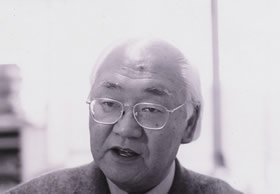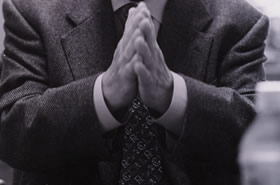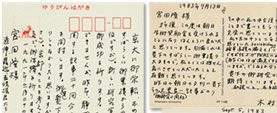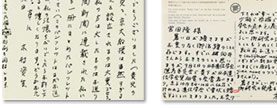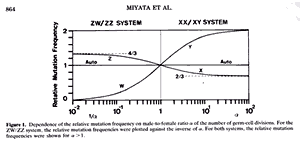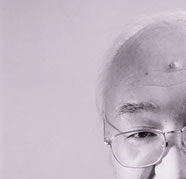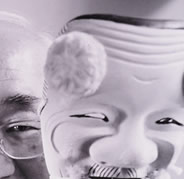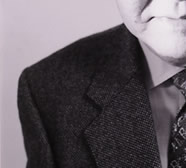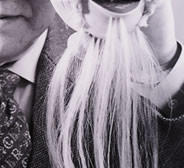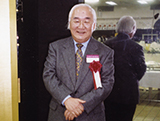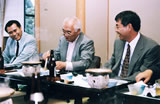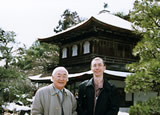When I entered graduate school, an exceptional subatomic physicist turned his attention to biophysics and began the study of quantum biology to understand the phenomenon of life from the perspective of quantum mechanics. I also turned my complete attention from subatomic research to biophysics. I started work at Waseda University's biophysics lab and began research into the electronic state of DNA using a computer. There were some struggles, but it was interesting because it was a new field.
During the course of my research, however, I began to have doubts about quantum physics. I began to suspect that the phenomenon of life might be apprehended not through electronics, but through the molecules of enzyme and DNA. In 1973, Professor Hirotsugu Matsuda began a new course in mathematical biology, and he invited me to join. Mathematical biology is the attempt to understand the phenomenon of life using mathematics. I had the idea of conducting research into evolution from the molecular level (DNA), so I transferred to Kyushu University. |
 |
| The study of molecular evolution |
 |
 |
I was convinced that the study of the genome sequence in DNA was coming, so through trial and error, I worked out a program for the analysis of that sequence. In 1976, Sanger determined the fuzzy sequence of j x 174. In that sequence, he discovered an overlap in the genes transcribed with one sequence in two different reading frames. I immediately tried to analyze that with the program. When I did so, I found that this sequence, which I had thought resembled an ordinary genetic sequence in that it was incapable of change, could actually change quite substantially. (These findings were published in Nature in 1978.)
This data supported the idea that of the neutral evolution of DNA, so when the thesis appeared, I immediately received a call from Dr. Motoo Kimura, a proponent of the neutral theory. I had not quoted his neutral theory from my list of sources. I came from the field of physics, so I didn't know anything about it. Really (laugh). But Dr. Kimura thanked me for my analysis based on neutrality and sent me a copy of his thesis. Perhaps he meant to say that I actually had quoted from it. |
 |
| Verification of the neutral theory |
 |
 |
The American geneticist Dr. Crow visited me in 1980, and he told me about a pseudo-gene that resembled the alpha globin gene, but for which transcription stopped part way through. I immediately thought this would verify the neutral theory and asked if that gene had a function. Crow answered that it probably didn't. If it had no function, its evolution speed would be the maximum in the neutral theory. Considered from the perspective of natural selection, the evolution speed should be 0--if there is no function, selection doesn't come into play. In other words, the entirely opposite result would be expected depending on which theory was adopted. I made the calculations right away, and wrote a thesis in one week. The result was strong data supporting the neutral theory, with evolution speed at the maximum.
Later, I developed the homology search method, presented the male-determining evolution theory, in which the male of the species determines evolution, and fixed the evolutionary location of old bacteria by using gene duplication. I left behind very significant research into the evolutionary mechanism of molecules and molecular genealogy, putting an end to a controversy that had lasted 10 years. |
|
 |
 |
 The field of theoretical physics which I first came into contact with university. I well recall studying this text with rapt attention. The field of theoretical physics which I first came into contact with university. I well recall studying this text with rapt attention. |
 |
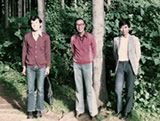 |
 At an academic conference in Hokkaido while a student at Kyushu University. Left: Takashi Gojobori (National Institute of Genetics: professor) / Center: Miyata / Right: Teruo Yasunaga (Osaka University professor) At an academic conference in Hokkaido while a student at Kyushu University. Left: Takashi Gojobori (National Institute of Genetics: professor) / Center: Miyata / Right: Teruo Yasunaga (Osaka University professor) |
 |
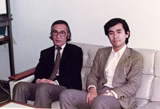 |
 With my first student, Gojobori. Left: Miyata / Right: Prof. Gojobori With my first student, Gojobori. Left: Miyata / Right: Prof. Gojobori |
 |
|
